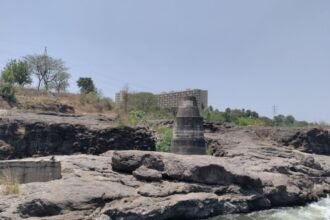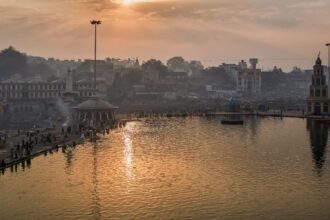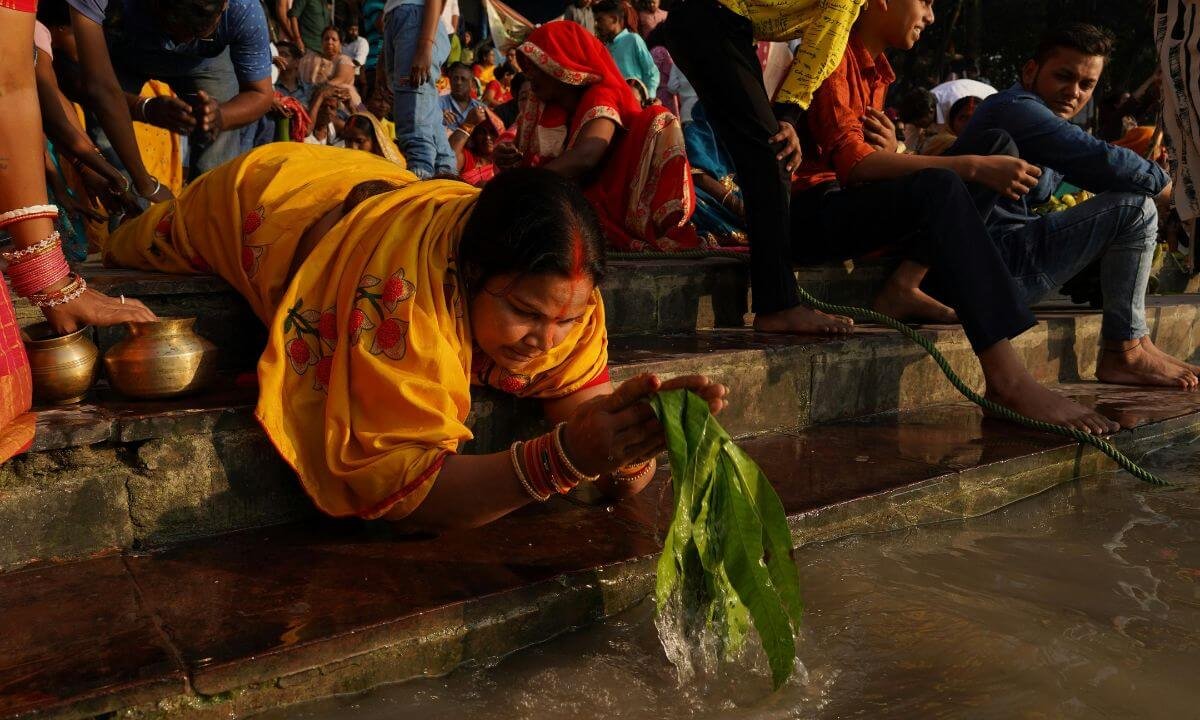The Godavari Aarti Nashik is a very spiritual event that happens when the sun sets over the ghats of Nashik and the Godavari sparkles with golden light. This tradition becomes even more important during the Kumbh Mela 2027, when it draws lakhs of pilgrims and spiritual seekers into an encounter that is both beautiful and life-changing.
- The Significance of Aarti on the Godavari
- When and where does the Godavari Aarti take place?
- What You Will See and Feel During the Ritual
- A Spiritual and Visual Experience
- Sounds of the Aarti: Music and Devotion
- Safety and Crowd Control
- Eco-Aarti: A Thoughtful Step Forward
- Advice for People Who Are Visiting for the First Time
- Conclusion: Light, Faith, and Flow
Whether you’re attending for religious reasons, cultural interest, or spiritual awakening, witnessing the Godavari River Aarti during the Kumbh is a moment you won’t forget.
The Significance of Aarti on the Godavari
An aarti is a Hindu devotional rite in which light from wicks dipped in ghee or camphor is given to one or more gods. But when done on the banks of a holy river like the Godavari, especially during the Kumbh Mela, it becomes a group gesture of devotion.
The Godavari People do Aarti Nashik to show their thanks to the river, which is seen as a goddess and a purifier. The river is more than just a body of water; it is divine and has the potential to wash away sins and lift the spirit.
When and where does the Godavari Aarti take place?
The Ramkund Ghat in Nashik city is the most famous place for the aarti. During the Kumbh Mela in 2027, there will be special plans for grander than usual evening aartis every day.
- The aarti is done every night of the year, but during the Kumbh Mela:
- The scale increases massively.
- Hundreds of priests, sadhus, and volunteers participate.
- Massive crowds line the ghats and bridges.
- Bells, conches, and Vedic chants can be heard all around.
The ideal time to see the aarti is right after sunset, when the river mirrors the lights from thousands of diyas (oil lamps).
What You Will See and Feel During the Ritual
As the Godavari Priests stand on raised platforms facing the river and hold massive, multi-tiered aarti lamps as Aarti Nashik begins. Everyone starts to chant “Om Namah Shivaya” and “Har Har Mahadev.” The smoke from the incense rises into the air. The dancing flames give the river a pleasant glow.
The audience, many of whom are holding little lamps and baskets full of marigolds, shouts in time. Some people cry, and others sit quietly and think. The energy is electric but calm, like a spiritual vibration that goes beyond language, religion, and belief systems.
As the event comes to an end, devotees float lit diyas on the river, making a beautiful sight of light moving downstream. This is a symbolic way of letting go of prayers and aspirations.
A Spiritual and Visual Experience
The Godavari Aarti Nashik is a spiritual experience that lets people feel connected to something bigger than themselves. It’s a visual feast for photographers and travellers, a wonderful mix of tradition, devotion, and community spirit.
The aarti is not a show for tourists. It’s a group act of giving up, being thankful, and celebrating that is done with the most honesty.
Sounds of the Aarti: Music and Devotion
The aarti is accompanied by:
- Live bhajans sung by local devotional groups
- Music with a tabla, harmonium, and conch shell
- Recorded Vedic mantras played through loudspeakers
- Spontaneous chants by the public
The entire experience engages all your senses—sight, sound, smell, touch, and emotion.
Also read : Why Godavari Kumbh River is Sacred at Nashik Mela
Safety and Crowd Control
For the Godavari Aarti during the Kumbh Mela 2027, there will be extra safety measures in place:
Areas set aside for families, seniors, and those with disabilities to watch
CCTV cameras and police volunteers on the ground
First-aid stations and water stations
The people in charge want to make sure that everyone may enjoy this divine show in a safe and peaceful setting.
Eco-Aarti: A Thoughtful Step Forward
The aarti has also been a place to raise awareness about the environment in recent years. Authorities have pushed:
- Using lamps that break down naturally
- How to properly throw away offerings
- No plastic participation
- Clean-up drives after aarti
The goal is to safeguard the Godavari Kumbh River while simultaneously honouring it.
Advice for People Who Are Visiting for the First Time
Get there early (at least an hour before dusk) to find a decent place.
Bring a mat or scarf to sit on besides the ghat.
If you can, get a tiny diya set from a local store to take part.
To keep in tune with the mood, be quiet or chant softly.
Don’t dump plastic into the river; be polite and care about the environment.
Conclusion: Light, Faith, and Flow
The Godavari Aarti Nashik during the Kumbh Mela 2027 is more than just a religious ceremony; it is a living celebration of India’s spiritual core. The divine light that shines off the Godavari’s surface will stay with you, whether you believe in God or are looking for him.
Don’t miss this wonderful moment if you’re going to the Kumbh. Let the river’s flow take away your worries, and let the flame of devotion light a fire that will last forever.






